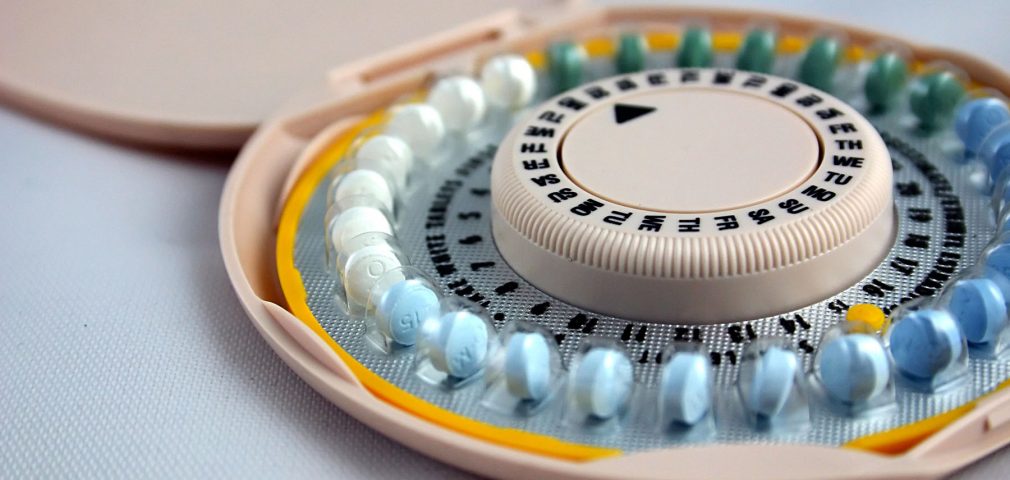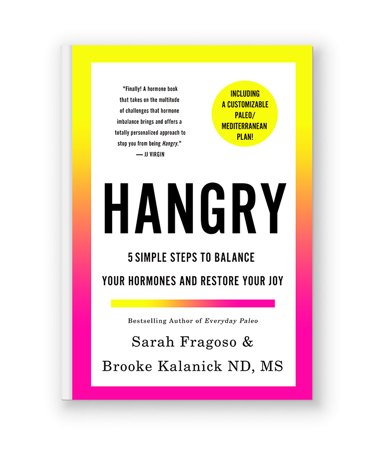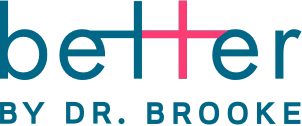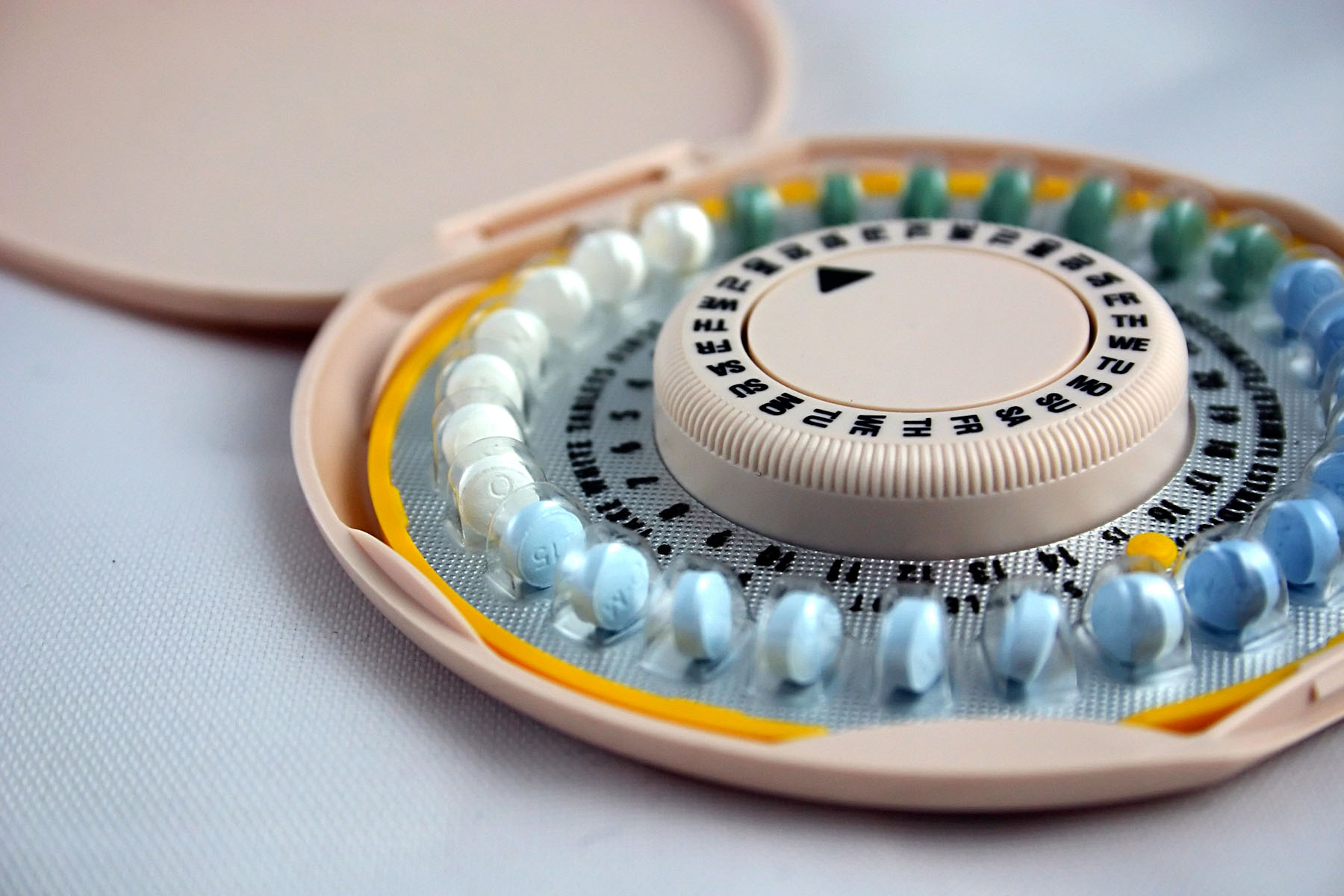
Acne: Is It Your Hormones Or Your Diet?
It is both. Your hormones and diet that is.
Despite the dermatology party line, “the cause of acne remains unknown” or acne is a vague condition of “hormonal imbalances”, we know a lot actually about what causes acne – and what can help clear up your skin. Hint: it’s not a deficiency of birth control pills.
Far from a teenage nuisance, acne affects nearly 50 million Americans of all ages. To deal with it, the conventional route offers antibiotics, high dose vitamin A (known as Retin A) or of course, the Pill. And your drug store or department store make up counter focuses mostly on topical treatments. (Want my fav topical treatments? Grab this free guide.)
The trouble with all of these is that none of them address the underlying cause leaving many women still breaking out –or breaking out again as soon as they stop the medications. Leaving others wary of side effects from prescriptions or dried out and irritated from topical treatments.
So what is the underlying cause? In most cases, it’s the perfect storm of dietary issues colliding with hormone trouble.This is awesome news, because it means there is a lot you can do! But before we get to that, let’s address the long standing position that diet has nothing to do with it.
Two main studies gave us the ”diet is irrelevant” advice. The main dietary-acne study is from 1969, where they attempted to study chocolate’s effect on acne with a control group that had a placebo “chocolate bar” that still contained the same amount of sugar. Not controlling for sugar, merely chocolate, does not tell us much as you’ll soon learn that sugar, carbs and the hormone insulin are big players in breakouts. (Wondering about your insulin or other hormone issues? Take my quiz.)
The other frequently cited study from 2003 did not account for the subjects baseline or past diet (so there was no way to know how the studied diet differed from their old one), there was no control group and they didn’t have a solid, objective measure of improvement (such as counting blemishes before and after). The take away that “diet doesn’t matter” from this study, was highly subjective and without an objective measure of improvement, it was hardly scientific!! What’s more, there is a whole lot of other science (not to mention much clinical experience by docs such as myself) telling us just the opposite.
What is acne anyway? (Besides the extreme blow to self-confidence….)
First a little skin anatomy 101: each pore is part of a pilosebaceous unit in your skin. The pore is the opening of a hair follicle (the pilo part) and within it there is a little oil or sebum making gland (the sebaceous part).
There are two types of comedones (aka pimples): open and closed. Open comedones are what we call blackheads, they are pores plugged with dead skin cells from within the follicle and excess sebum which when oxidized with outside air becomes grey or black in color. Closed comedones are known as “whiteheads” and are closed to the outside air and are more inflamed as that white stuff is indeed pus, the aftermath of inflammation at war with bacteria. These are often more swollen and red.
What causes acne?
Let’s look first at the immediate situation going on in your pores and then we’ll discuss the background causes.
Here’s the four step process to getting a pimple:
+ The pore or follicle opening gets blocked (usually with flattened, dead skin cells that don’t shed properly typically due to hormonal imbalances and dietary compounds like lectins).
+ There is excessive sebum (aka oil) production due to excess testosterone, typically from insulin issues or poor hormone metabolism (i.e. gallbladder sluggishness, slow digestion or improper hormone metabolism in the liver).
+ Bacteria grow and infect the pore. With the pore now blocked and sealed up with dead skin and oil, this is a very happy little home for bacteria. That bacteria is Propionibacterium acnes which normally lives on skin’s surface without issue but once it outside air is kept out, we have an anaerobic (without oxygen) situation in the pore for that bacteria thrive.
+ Finally, inflammation occurs in the blocked pore and surrounding skin tissue. Locally, the hormones of the immune system (called cytokines) start an inflammatory reaction under your skin’s surface. Now you’ve got the red, swollen, possibly warm to the touch, perhaps even painful pimples, pustules and cysts. Note: pressure and squeezing of these type of blemishes will leak this inflammatory mess into the surrounding tissue spreading the infection and inflammation, so hands baby! (More on better blemish care here, if you didn’t grab it above.)
How Diet Affects These 4 Steps
Insulin & Her Friends Up Your Inflammation
Insulin is a hormone secreted to shuttle glucose into a cell. It’s released during stress or when we eat – more so when you eat carbohydrates (whole grains, legumes, cereals, breads, pastries, candy, sweets, sugar in all its forms, chips, tortillas, potato, sweet potato, fruit, etc.). It is released when you eat protein also, but as part of a healthier hormone mix for most (although some women with PCOS or insulin resistance do get an exaggerated insulin response from protein as well) and through a series of events, insulin is triggered when we eat fat as well – particularly when it’s combined with carbohydrates. (More on this here.)
Too much insulin will increase inflammation as well as increase testosterone (created from your progesterone in the ovaries) leading to more oil production and thus more breakouts. Insulin also lowers something called sex hormone binding globulin, which normally binds up thus inactivating much of our testosterone. Now we’ve got more active, free testosterone around to muck up the works in our pores.
This problem is worse in women with PCOS (polycystic ovarian syndrome) as they tend to also have metabolic issues creating more of an even more potent form of testosterone: DHT (di-hydro testosterone). Acne is a common issue with PCOS and can even be thought of as insulin resistance or diabetes of the skin.
Get you FREE copy of my Guide To Lab Testing & Your Hormones
This guide covers hormonal testing and thyroid patterns and will show you how to suss out the Hormonal Dealbreakers of inflammation, anemia and blood sugar problems.
Get Your Free Lab Guide HereSpecial Note for Women With PCOS & Acne: Ladies, we have it the roughest. Not only do we have the issues above but we have exaggerated responses to testosterone and other androgens like DHEA, DHT (a potent metabolite of testosterone) and androstenedione at the level of the pore. Our sebaceous glands are hyerpsensitive to testosterone so we can get oilier and breakout easier. But also we have more inflammation than your average girl meaning we are more sensitive to dietary sources of inflammation and stress.
Women with PCOS have a low level smoldering inflammation as a rule which can be turned on high quite easily by eating the wrong foods (poor dietary fats, food sensitivites, etc.), stress, not managing our blood sugar, etc.
As if this isn’t enough hell in our younger years, as we age we become more insulin resistant, more stress sensitive, more progesterone deficient, develop more inflammation and worsened testosterone metabolism. Couple that with PCOS creating more oxidative stress in general we can age quicker if we don’t have this inflammation and hormonal witches brew managed. Then it’s breakouts and wrinkles. Seriously is there anything worse? That is unfairness at its peak.
9.9 times out of ten if you have acne or especially PCOS and acne you will be prescribed the birth control pill. For most women this does normalize the acne by ramping up estrogen and skyrocketing sex hormone binding globulin effectivly lowering testosterone.
But what happens when we come off the pill? Our hormonal issues are still there or worse and our metabolic issues are almost always worse. Never mind the rash of nutrient deficiencies creating by the pill not the least of which include zinc (absolutely key for healthy skin) and CoQ10 your big-gun anti-oxidant key for skin health, aging and cellular health/energy production.
I 100% get the knee jerk reaction to take anything that will clear up your skin – I’ve done it myself. It’s a temporary fix at best and what’s the better option in my opinion is educating you about how you can heal your hormones and skin from the inside out because you deserve to have power in this situation that I can attest to makes you feel utterly sad, embarrassed, heartbroken and frustrated.
Having PCOS myself, my skin is the first thing to show my hormones are out of whack and it has caused me to shed more tears in the past twenty years than any other manifestation of PCOS.
Super tired eyes this day, but my skin was great and blemish free. Thankfully this is typical now but it wasn’t always the case and I’ve missed out on more life because of feeling insecure about acne than I care to admit.
Back to testosterone, insulin and your skin:
This insulin problem doesn’t stop with testosterone. Other insulin associated hormones get in the acne mix here too like IGF1 (insulin like growth factor 1) which is a potent stimulator of cell growth throughout the body. High levels of insulin will cause higher levels of free IGF1 (remember it’s free hormones that are active). This free IGF1 may stimulate overproduction of the keratinocytes, causing them to overgrow and block your pores.
Then there’s ILGFBP3 (insulin like growth factor binding protein 3) which is a key regulator in programmed cell death, or apoptosis (the normal ending of a cell’s life cycle when it’s time to be replaced). High levels of insulin will lower circulating IGFBP3 delaying apoptosis of keratinocytes that line the follicle, leading to more flaky cells to clog up your pores.
What’s more, these IGFs can further intact with one another especially when there is a high concentration of transglutaminase around creating more inflammation. Transglutaminase is an enzyme in your intestines that digests wheat. The more wheat we’re eating the more transglutaminase will be made throughout your body – including in your skin.
With too many starchy and sugary carbs causing this whole insulin mess, you can see why gluten based carbs (bread, pasta, pastries, cookies, muffins, bagels, etc.) are double trouble for your skin because of transglutaminase. Not to mention that gluten, contains something called amylopectin in our modern wheat it causes a really big insulin release making it what I call a supercarb. (More on wheat and gluten here.)
Order Hangry and get some AMAZING bonuses right now!
If you’ve ever felt like a Hangry B*tch and are ready to balance your hormones and restore your joy in just 5 simple steps then Hangry is for you!
GET YOUR BONUSES NOW
NOTE: while the above mechanism is founded in research there is a lot of variability in individuals’ responses to wheat. If you tolerate wheat fine, have glowing clear skin, then this isn’t a biggie for you and feel free to eat as you wish as I’m not here to say gluten is the devil 🙂 But if you’re struggling with breakouts though, it’s worth a try to eliminate it and see if your skin improves.
On a personal note, wheat gives me the worst, deep, red painful breakouts whereas dairy gives me more superficial but greater in number breakouts. Basically mac and cheese is my skin’s worst nightmare…or maybe it’s ice-cream. They are in a tie at this point.
Dietary Fat, Diary and Grain
Omega 6 Fatty Acids: One inflammatory cytokine (remember cytokines are the hormones of your immune system) involved in acne is IL1 (interleukin 1). Acne sufferers have elevated levels of the alpha form of IL1 and some studies show this inflammatory hormone causes increased skin scale formation (thus more scaley-nastys to block your pores). And when bacteria in our pores cause an immune reaction, even more IL1 is secreted (by little white blood cells called monocytes) which can disrupt the normal sloughing off of skin and yeah, more breakouts.
IL1 can be elevated from too many omega 6 fatty acids in our diet. These fats come primarily from grains, seeds, nuts, and vegetables oils (i.e. sunflower, grapeseed, etc.) so it’s important to balance your intake of the more anti-inflammatory omega 3s from things like fish or taking fish oil supplements as well as consider decreasing your Omega 6 intake when you have acne.
Lectins are common in plant foods (grains and legumes especially). When it comes to acne, they interfere with the dissolving and sloughing off of sticky corneycytes. This process requires enzymes called glycosidases (which dissolves the carbohydrate part of the cell) and proteases (which dissolve the protein part) – and it’s crucial that the glycosidases act before the proteases for the corneoycyte to degrade properly and not block the pore. Lectins mess up the order of this process. And to make matters worse, lectins also stimulate IL1 alpha so we get more inflammation and more pore blockage.
And there’s even one more way lectins make you breakout: wheat germ agglutinin is a particular lectin that impairs zinc metabolism. Zinc works in several ways for skin health. With this wheat issue we’re talking at the level of your cell’s nucleus. Long story short, wheat germ agglutinin blocks important aspects of zinc’s metabolism which triggers a whole lot of inflammation.
Which leads us to the next acne culprit in your diet: dairy. Milk, cheese, yogurt and other dairy products are very highly concentrated sources of calcium, which impairs zinc metabolism. And perhaps worse, dairy can have a very exaggerated insulin response (despite being considered “low glycemic” the insulin release it triggers is very similar to white bread). Diary is also ripe with hormones, making it a triple threat to an acne free face.
Get Back To Basics
The popularity of a Paleo or Ancestral diet for weight loss and autoimmunity is at its peak – and for the most part, its reputation is rightly deserved. It is also a great template for clearing up acne.
The Paleo Diet isn’t magic, but it does get out all of the problem foods I just mentioned making it a great diet for clear skin. So give something like Whole30 a try to clear up your acne or at least consider drastically reducing some of the skin’s biggest offenders: sugar, wheat and dairy for 30-60 days.
I’d caution you though if doing something like Whole30 or a Paleo Challenge to really watch the natural sugars that are allowed as they will still fire up insulin if you have insulin resistance or PCOS. These include agave, dates or date sugar, honey, etc.
This Paleo template diet will be enough for some women to have a clear complexion – for others further support of the underlying insulin resistance, low estrogen or progesterone, poor testosterone metabolism, sluggish digestion or liver detoxification of hormones, poor nutrient status (i.e. low zinc is incredibly common) or issues like leaky gut, low digestive enzymes or disruption of your gut flora (i.e. need for probiotics) may need to be addressed beyond diet.
Or if you’re coming off the pill you can be not only deficient in a host of nutrients key for clear skin but remember whatever hormonal issues were there before creating the breakouts will still be there and we have to address those. Please know this is totally doable! Acne is not incurable but it does take time to get those hormones in balance. Have faith my beautiful one!
And don’t underestimate the power of beauty sleep! Lack of sleep is stressful and stress is inflammatory – so the old adage is true and you need your beauty rest. All other stress has a role as well, so when you feel your skin looks haggard, inflamed or you breakout during high stress, it’s not in your head.
So rest up, manage stress, take a pass at the Paleo diet and if you need help, by all means reach out and let’s see what the bigger issues may be: drbrooke@betterbydrbrooke.com
And What You Put On Your Skin Matters
There is no shortage of products out there promising to clear up your acne. Many do work, many can be too harsh or drying and many are best tossed in the trash. While I could (and maybe should) do a round up of my favorite skin care products here’s the most important things to know:
+ Don’t over dry. Be careful with acne treatments and use only on congested breakout prone areas.
+ Natural is a great idea. While converting your entire skin care regimen to 100% paraben, phthalate free etc. can be a big undertaking it’s wise to start moving in that direction. Because much of the underlying cause of acne, especially in PCOS, is hormonal things that mimic estrogen like parabens are only going to add to your misery.
Order Hangry and get some AMAZING bonuses right now!
If you’ve ever felt like a Hangry B*tch and are ready to balance your hormones and restore your joy in just 5 simple steps then Hangry is for you!
GET YOUR BONUSES NOW
+ Don’t be scared of oil. Non-oil moisturizes are so popular among acne sufferers but for so many can make the sebaceous glands rebound and produce more oil. A natural oil like Ann Marie Gianni’s Herbal Facial Oil for Normal/Combination skin – which smells so good I’d probably use it even if it didn’t work! Or their Herbal Facial Oil for Oily Skin. With topical oils you can use sparingly but they do wonders to help balance out oil production.
Finally, what if you only have acne on your back or chest or arms? The underlying mechanism is the same so diet and hormones are still the answers. However, if you only breakout along a bra line or where clothing has been rubbing your skin, that is more of a local vs. systemic cause blocking your pores.
One tip for avoiding breakouts that seem to be worsened with a fit lifestyle (be that your sports bra rubbing against your skin or just sweat) is to spray your body before and after with some sort of anti-bacterial spray like Earth Science Clarifying Herbal Astringent. And of course, wash your workout gear regularly, change out of sweaty clothes, even if it’s just for clean workout clothes…who does this? Guilty! And shower as quickly as you can after getting sweaty.


